1155 vs 2011. Only old people go to battle
In 2017, AMD once again opened the Pandora’s box, launching mainstream processors with more than four cores, with a performance per core at least comparable to modern Intel processors with equal frequencies. Full parity did not work out, but there is no longer one and a half to two times gap depending on the type of load, as in the days of FX. In synthetics, the performance of Ryzen cores is roughly equal to the performance of Ivy Bridge cores (3xxx). The move turned out to be pretty strong, so the blue team had to hastily release the six cores on the updated 1151. What am I doing for? And actually to the fact that since last year, six or more nuclear processors with fast cores moved to the consumer segment from a narrow HEDT niche. Among other things, this means that mass software has finally begun to be optimized for multi-core multi-threaded CPUs.
What is a modern mass 6-8-core processor? This is a frequency of 3.5-4.5GHz, a relatively fast inter-core bus of one architecture or another, dual-channel DDR4 memory with a frequency of 2.4+ GHz. At the same time, the cores of the same Ryzen do not beat performance records to the beat. But what if ... instead of a modern and rather expensive platform, take the old 2011 Intel platform, the benefit now is the supply of decommissioned server processors of the E5 v1 and v2 lines for this socket clearly exceeds demand? Especially enterprising Chinese, having seen such a situation, quickly mastered the mass production of motherboards for this platform, and the remaining components, a processor with memory, are relatively inexpensive in the secondary market and are not particularly susceptible to aging. The capacity of the register DDR3 memory will be lower by one channel than the DDR4, but then there are four memory channels on this platform.
I do not have the Ryzen platform at hand, so we will compare the available configs, all related to the generation of Ivy Bridge. In general, the platforms that are not comparable at the time (at least for the price) are compared, but the time equalizes everyone.
')
The following configurations took part in the test:
MB : ASUS P8Z77-V LX
RAM : 2 x DDR3 Kingston Hyper-X 8GB 1600 @ 2150MHz
CPU : Intel Core i7-3770K @ 4440MHz
4 cores, 8 threads, 8MB cache 3 levels, nominal frequency from 3.5GHz to 3.9GHz in boost. The multiplier is not fixed, dual channel DDR3 memory controller.
The cost of this particular kit is not known, it has been working for me since 2012
MB : Huanan X79 v2.49p (BIOS 4.6.5)
RAM : 4 x DDR3 Samsung 4GB 1333 @ 1866MHz
CPU : Intel Xeon E5-1650v2 @ 4100MHz
LGA1155, 6 cores, 12 threads, 12MB cache 3 levels, nominal frequency from 3.5GHz to 3.9GHz in boost. The multiplier is not fixed, four-channel DDR3 memory controller, with support for register memory.
The cost of the kit is 24 tr.
MB : Huanan X79 v2.49p
RAM : 4 x DDR3 Samsung 4GB 1333 @ 1866
CPU : Intel Xeon E5-2680v2
10 cores, 20 threads, 25MB cache 3 levels, nominal frequency from 2.8GHz to 3.5GHz in boost. The multiplier is fixed, a four-channel DDR3 memory controller, with support for register memory.
CPU cost 14 tr., Was taken for the experiments in the appendage to the previous set
Outside the standings there is a platform on Kaby Lake:
MB : Gigabyte Z270M-D3H
RAM : 2 x DDR4 Kingston Hyper-X 16GB 2400 @ 3200MHz
CPU : Intel Core i5-7600K @ 4500
4 cores, 4 threads, 6MB cache 3 levels, nominal frequency 3.8 with boost up to 4.2. Multiplier is not fixed
Directly test measurements were not conducted on it, but there are a number of observations during its operation. Where a comparison with her is appropriate, she is mentioned.
All tests also used:
Storage: NVME SSD ADATA SX8000NP
Video card: Palit GeForce GTX1080Ti
Platform stability was tested with successive 10–15-minute runs of OCCT Large Dataset and Linpack in the AVX version. The first test reveals very well problems with memory or its controller, the second with power supply circuits and a cooling system.
Tests were conducted under Windows 10 Pro 1803 (build 17134.320)
The Specter and Meltdown protection is deactivated on all test systems using the InSpectre utility.
All tests were carried out several times (at least three or four), the result of the first run was discarded, since the result of the first run is much more affected by I / O delays. Undertook the maximum result, the remaining test runs were carried out to verify possible anomalies.
On the LGA1155 platform, the peak performance of NVME drives in synthetic tests is limited by the bandwidth of the PCI Express v2 bus. On the Chinese motherboard, the SSD earned without interface restrictions in both the PCI-E slot and the M2.
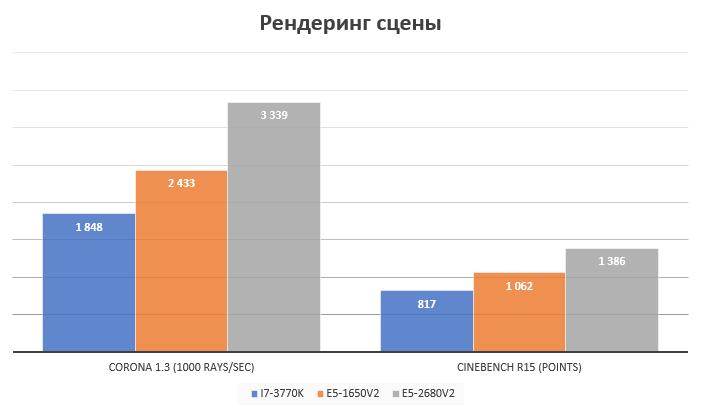
Rendering, along with video encoding, is one of the classes of tasks that parallelize almost perfectly and in theory almost linearly scale as the number of CPU cores increases. What actually confirmed the tests.
I took a set of pictures from the paintball taken on the good old Nikon D60 in NEF format. Only 329 frames. Import time, preview building and other operations were not measured, as it is not entirely clear how to measure them with sufficient accuracy. The conversion time of this batch of files to JPEG was measured. The task processing time was estimated by the difference in time of the change in the first and last exported JPEG. Not the most accurate indicator, I agree, 3-5 seconds are not taken into account at the start of the export process, but an easily automated test and you do not need to constantly sit and monitor the process with a stopwatch, as you would when trying to estimate the import time, and all the systems in equal conditions. The processing did not exactly rest on the disk, the source code and the export folder were on the SSD.

The results were rather strange at first glance. It would seem that the process of developing RAW images should be well parallelized. And even if the development of a specific frame cannot be scattered across several cores, there were more than three hundred pictures in the processing queue! Know yourself scatter each frame to your core. But judging by the processor load, which ranged from 40% on i7 to 20% on E5-2680v2, the old Lightroom does not know how to do this. According to the CPU loading graph, it can be seen that it cannot be used more than 4 threads, hence the minimal increase. It is surprising that it exists at all - the speed per stream on a 10-core should be noticeably lower than the overclocked i7. In general, the 2013 sample application is sharpened for a maximum of two to four-threaded processors and is not able to benefit from modern (and not very) multi-threaded processors.
After the results of the tests Lightroom 5.7, which caused disappointment, I decided to check how things are on the current versions of software from Adobe.
Testing was carried out again with real settings. The hardware acceleration of UI rendering was activated (judging by monitoring, Lighroom Classic supports drawing using DX12) and using OpenCL for Adobe Camera RAW, because in the absence of compatibility problems, no one in their right mind would turn off these options, but I’m testing system performance in general in certain tasks.
Adobe Lightroom Classic CC performed much better than the 2013 version of Lightroom. Apart from the fact that on I7, the latest version showed much better speed, the extra pair of cores gave a reduction in the processing time of the pack by almost a minute (55 seconds, to be exact), that is, by about 26%. The addition of another 4 cores gave an acceleration of 51 seconds or 30%. Excellent in itself, and if you compare the results of the i7 and E5-2680v2, it is altogether impressive. Decimal core does the job exactly 2 times faster than quad core. Scaling is more than linear, given that the i7 operates at 4.44GHz, and E5-2680v2 in boost squeezes out of itself 3.2GHz under load on all cores.
The difference in the behavior of different versions of the same application clearly demonstrates that you cannot just take and speed up the software just by giving it a bunch of cores. Software must also be appropriate.
Yes, the new Lightroom Classic CC is good, but the trial will end soon, and there is no desire to post 900 rubles per month for a subscription, I would rather pay the full amount once, but Adobe does not offer this option. The last Lightroom that could be bought, not rented is its sixth version. But again, there is no reason to hope for an upgrade of this version, just as for noticeable discounts when upgrading from 5.7 to 6.x. Not interested.
I wonder what can replace it? Nikon Capture NX? Maybe, but he steadily fell at me processing 2-3 frames from the queue, so it was not possible to conduct tests. It seems that some of the latest updates of Windows 10 broke it, but in any case, even if there is a normal multithreading, it is pointless to expect OpenCL support to be delivered to it, and without it, we will doom to repeatedly play Lightroom Classic.
Raw Therapee? Not even funny. Despite the rich functionality, to use this miracle of Open Source, which the hand of the UX-designer obviously did not touch, had to force myself. Hang up when you click on a folder and do not respond for 15 seconds without any indication of the process? The processing time, at times exceeding even Lightroom 5.7 (it was not possible to measure, minutes for 5 Raw Therapee chewed on about a third of a pack, and I was tired of waiting)? This is the norm. Probably. For someone. May be. But I'd rather pay for an adequate interface and a normal speed. What do we have out of paid analogues working under Windows? Who else makes graphics software?
Corel with its Corel AfterShot Pro 3. Moreover, with applications for winning the form “Corel AfterShot Pro 3 is up to 4x faster than Adobe Lightroom”. Already interesting.
Of course, with Corel's quadrupled speed, it’s bent, of course, but on I7-3770K Corel AfetrShot Pro 3 plays back from Adobe Lightroom CC about 84 seconds from 211 or 40%. At E5-1650v2, any fourfold superiority over Lightroom also smells, moreover, the gap was reduced, but he played 36 seconds or 24% in 300+ images. But on 20 streams, an unpleasant surprise was waiting for me - the processing time of a pack increased one and a half times compared to 12 streams. WTF ?! And if you disable HT ? On 10 threads, it works quite normally, ends half a minute faster than on a six-core. And if you simply set a limit on the number of threads with your hands, and turn the HT on the processor back on? And about the same works. That is, AfterShot Pro on the number of threads more than 10 starts to level off wildly on level ground. Well, also the result. Another proof that in order for multi-core CPUs to show themselves, they need the appropriate software. And Corel AfetrShot Pro 3 was clearly sharpened by 4-8 threads.
The choice is mainly due not to the representativeness of the sample, but to the fact that it was at hand from those games in which there are built-in benchmarks that allow to get less stable and repeatable results. But some kind of logic can be traced.
The settings in all games are maximum with the exception of anti-aliasing settings. AA is disabled so as not to rest against the fillrate limit. The minimum averaged FPS was taken into account as the main indicator of the comfort of the game process on the tested hardware with the maximum settings. The indicator of “very rare events”, 0.1% min fps , is still more an indicator of random events, and if microfreezes do not go a continuous stream every few seconds, then it seems to me that the comfort of the game is not particularly affected. Naturally, I checked the frame-time schedule, and if the game did have problems with microfreezes, they were fixed. The results of measurements were taken from the built-in benchmark of the game, if the benchmark does not allow obtaining statistics explicitly, as in GTA V, the Riva Tuner Statics Server was used to fix performance parameters.

Relatively middle-aged multiplatform game, on Windows uses the graphical API DX11. Since it came out on consoles, with support for multithreading, everything is pretty good, and the requirements for core performance are moderate, so the game supports consoles of the previous generation. Since the test cannot produce statistics, Riva Tuner Statistics Server was used to collect the test results. In order to complicate the task of the processor, the options for increasing the range of detail and shadow rendering were included.
, PC DX11. PC . , - HyperThreading. E5-2680v2 CPU , 5-6 . CPU, , FPS . FPS . HD , . , VRAM 2.4 4.6 , 11- 1080Ti .

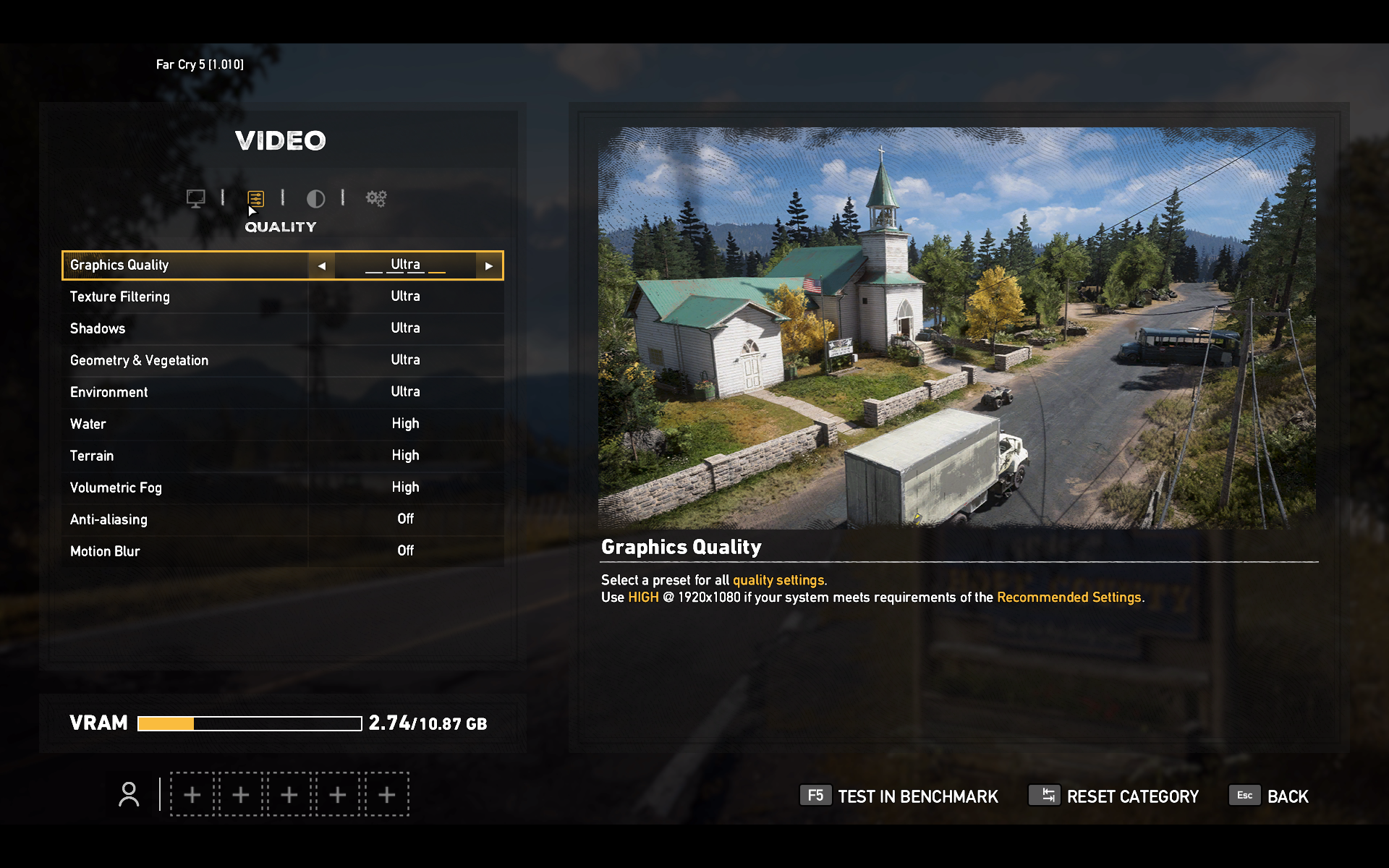
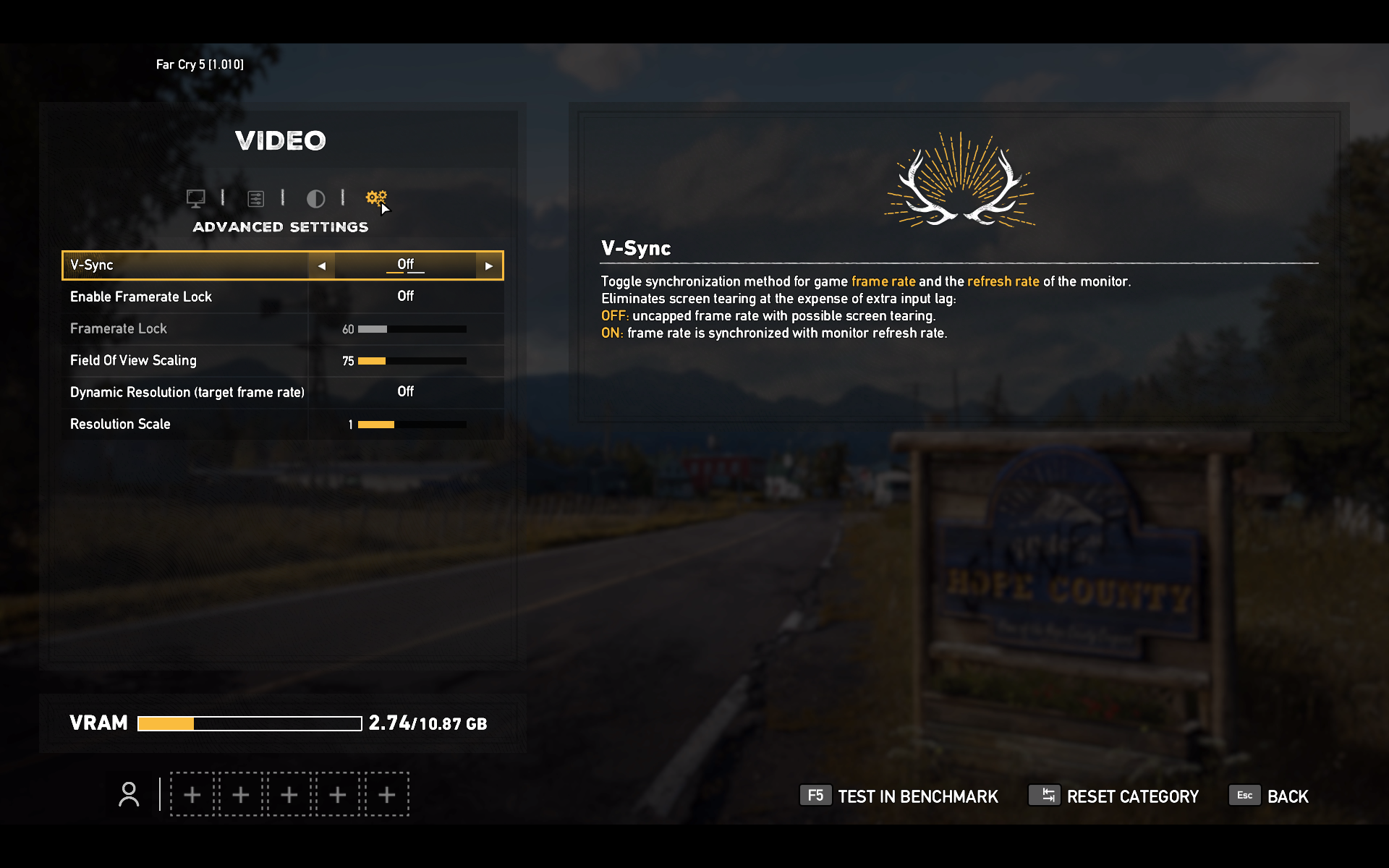
, DX12. , . DX12 . , FPS 15-20 , . , .
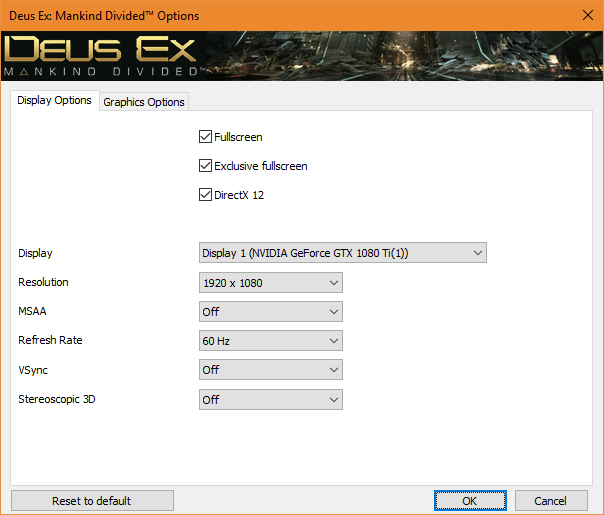
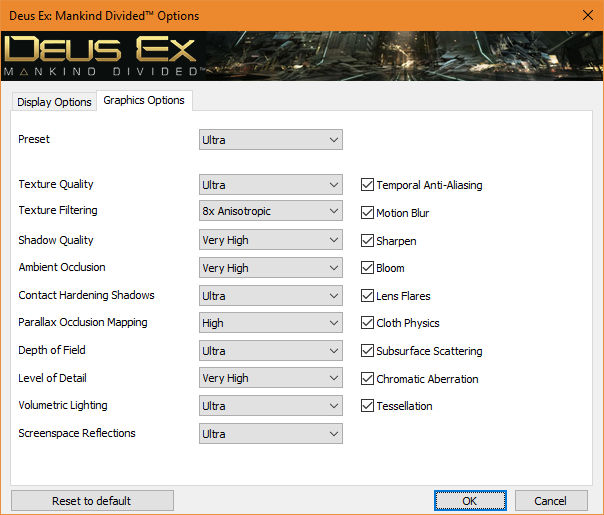
, , , FPS .
id tech 6. Doom, Wolfenstein New Colossus
ID Software . ID Tech 6 API Vulcan CPU, . E5-2680v2 20 , . Doom 200 CPU.
Wolfenstein New Colossus — 20 , — 200 , : FPS 170 230 Xeon-. I7 – 150 270. FPS , , – FPS . . 150 FPS 170 .
Cities Skylines
. , E5-2680v2 . FPS 25, , . E5-1650v2@4100 , FPS 30, I7-3770K@4444 35-40 . I5-7600K 50-60 FPS .
: DosBox + Carmageddon + nGlide
, , . , Xeon-. , , , , , HT, , DosBox , boost 1.2 3.5 GHz, . , .
:
, 70-80%, — GTX1080Ti, FPS .
FPS 30 , E5-2680v2 20. I7 E5-1650v2 – 25 , , FPS 5-7 . E5-1650v2 - . I5-7600K@4500 .
. , .
E5-2680v2 CPU CPU. , , - , . , . 50 , , .
E5-1650v2 . , . , .
I7-3770K. , . . , , I5-7600K. , I7 , ( — I3-8100).
, LGA2011v2 Xeon- E5-2667v2 E5-2687Wv2 c , Xeon E5-2680v2 , 4-8 , . , E5-2680v2 , , (, ).
PS: … , . E5-1650v2 OCCT . 3, . , – , .
What is a modern mass 6-8-core processor? This is a frequency of 3.5-4.5GHz, a relatively fast inter-core bus of one architecture or another, dual-channel DDR4 memory with a frequency of 2.4+ GHz. At the same time, the cores of the same Ryzen do not beat performance records to the beat. But what if ... instead of a modern and rather expensive platform, take the old 2011 Intel platform, the benefit now is the supply of decommissioned server processors of the E5 v1 and v2 lines for this socket clearly exceeds demand? Especially enterprising Chinese, having seen such a situation, quickly mastered the mass production of motherboards for this platform, and the remaining components, a processor with memory, are relatively inexpensive in the secondary market and are not particularly susceptible to aging. The capacity of the register DDR3 memory will be lower by one channel than the DDR4, but then there are four memory channels on this platform.
I do not have the Ryzen platform at hand, so we will compare the available configs, all related to the generation of Ivy Bridge. In general, the platforms that are not comparable at the time (at least for the price) are compared, but the time equalizes everyone.
')
Test participants
The following configurations took part in the test:
MB : ASUS P8Z77-V LX
RAM : 2 x DDR3 Kingston Hyper-X 8GB 1600 @ 2150MHz
CPU : Intel Core i7-3770K @ 4440MHz
4 cores, 8 threads, 8MB cache 3 levels, nominal frequency from 3.5GHz to 3.9GHz in boost. The multiplier is not fixed, dual channel DDR3 memory controller.
The cost of this particular kit is not known, it has been working for me since 2012
MB : Huanan X79 v2.49p (BIOS 4.6.5)
RAM : 4 x DDR3 Samsung 4GB 1333 @ 1866MHz
CPU : Intel Xeon E5-1650v2 @ 4100MHz
LGA1155, 6 cores, 12 threads, 12MB cache 3 levels, nominal frequency from 3.5GHz to 3.9GHz in boost. The multiplier is not fixed, four-channel DDR3 memory controller, with support for register memory.
The cost of the kit is 24 tr.
MB : Huanan X79 v2.49p
RAM : 4 x DDR3 Samsung 4GB 1333 @ 1866
CPU : Intel Xeon E5-2680v2
10 cores, 20 threads, 25MB cache 3 levels, nominal frequency from 2.8GHz to 3.5GHz in boost. The multiplier is fixed, a four-channel DDR3 memory controller, with support for register memory.
CPU cost 14 tr., Was taken for the experiments in the appendage to the previous set
Outside the standings there is a platform on Kaby Lake:
MB : Gigabyte Z270M-D3H
RAM : 2 x DDR4 Kingston Hyper-X 16GB 2400 @ 3200MHz
CPU : Intel Core i5-7600K @ 4500
4 cores, 4 threads, 6MB cache 3 levels, nominal frequency 3.8 with boost up to 4.2. Multiplier is not fixed
Directly test measurements were not conducted on it, but there are a number of observations during its operation. Where a comparison with her is appropriate, she is mentioned.
All tests also used:
Storage: NVME SSD ADATA SX8000NP
Video card: Palit GeForce GTX1080Ti
Platform stability was tested with successive 10–15-minute runs of OCCT Large Dataset and Linpack in the AVX version. The first test reveals very well problems with memory or its controller, the second with power supply circuits and a cooling system.
Testing method
Tests were conducted under Windows 10 Pro 1803 (build 17134.320)
The Specter and Meltdown protection is deactivated on all test systems using the InSpectre utility.
All tests were carried out several times (at least three or four), the result of the first run was discarded, since the result of the first run is much more affected by I / O delays. Undertook the maximum result, the remaining test runs were carried out to verify possible anomalies.
Testing
Synthetic tests
AIDA64 memtest
Performance and memory latency
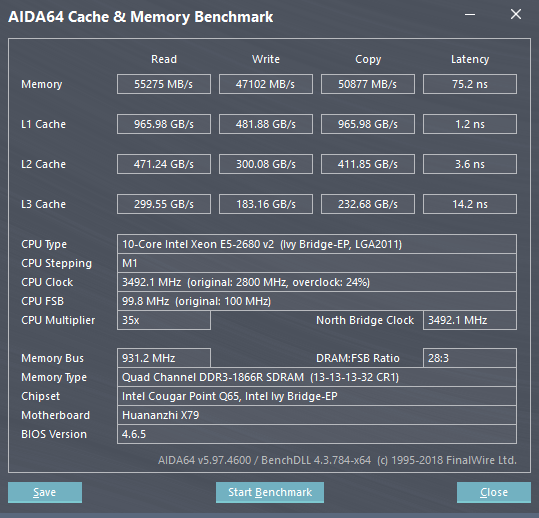




rystalDiskMark
NVME Drive Performance
I7 3770K, MB ASUS P8Z77-V, NVME SSD @ PCI-E 2.0 x4

E5-1650v2, HUANAN X79 2.49p, NVME SSD @ PCI-E 3.0 x4

E5-1650v2, HUANAN X79 2.49p, NVME SSD @ M2
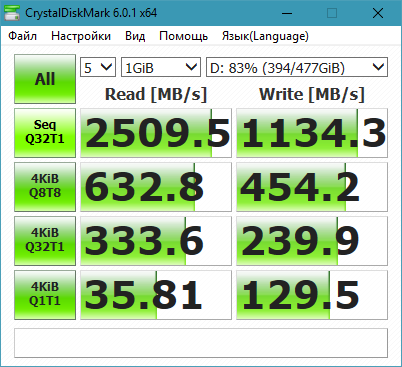

E5-1650v2, HUANAN X79 2.49p, NVME SSD @ PCI-E 3.0 x4

E5-1650v2, HUANAN X79 2.49p, NVME SSD @ M2

On the LGA1155 platform, the peak performance of NVME drives in synthetic tests is limited by the bandwidth of the PCI Express v2 bus. On the Chinese motherboard, the SSD earned without interface restrictions in both the PCI-E slot and the M2.
Rendering

Rendering, along with video encoding, is one of the classes of tasks that parallelize almost perfectly and in theory almost linearly scale as the number of CPU cores increases. What actually confirmed the tests.
Cinebench R15.0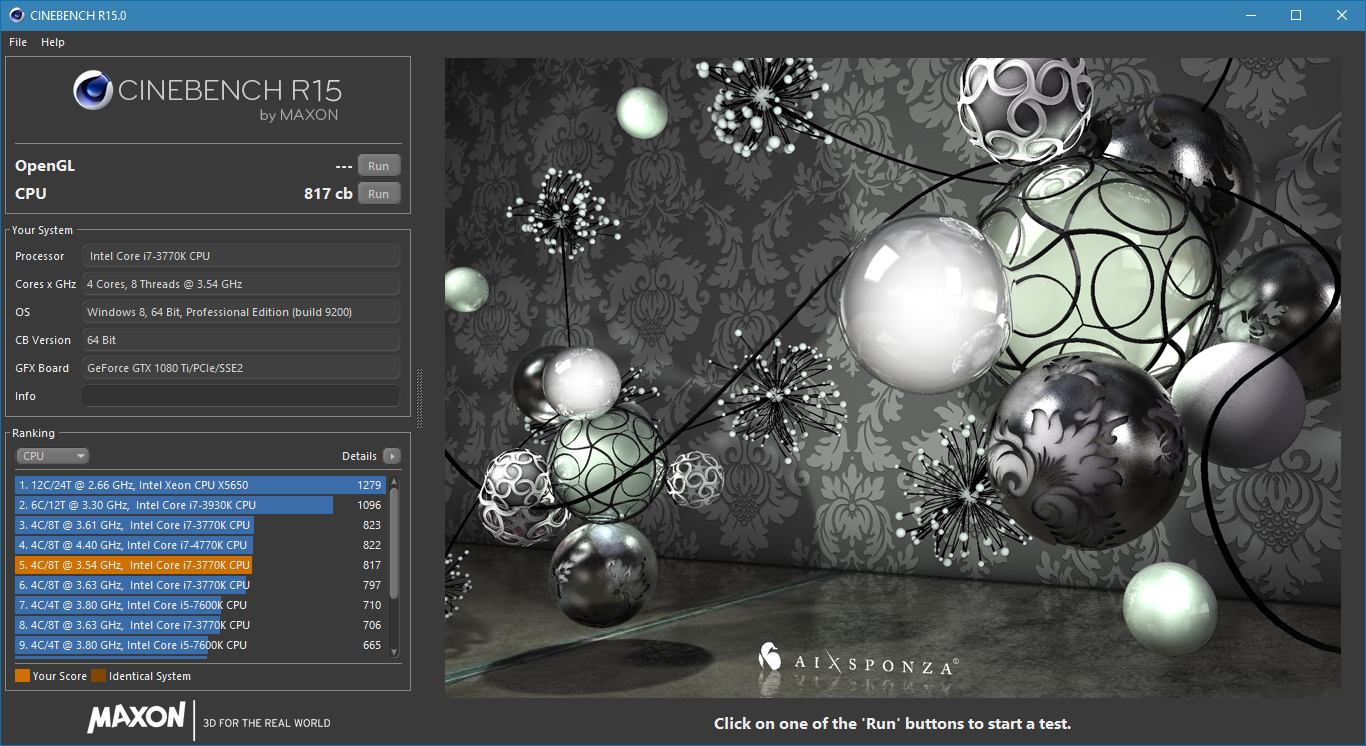

Corona 1.3 benchmark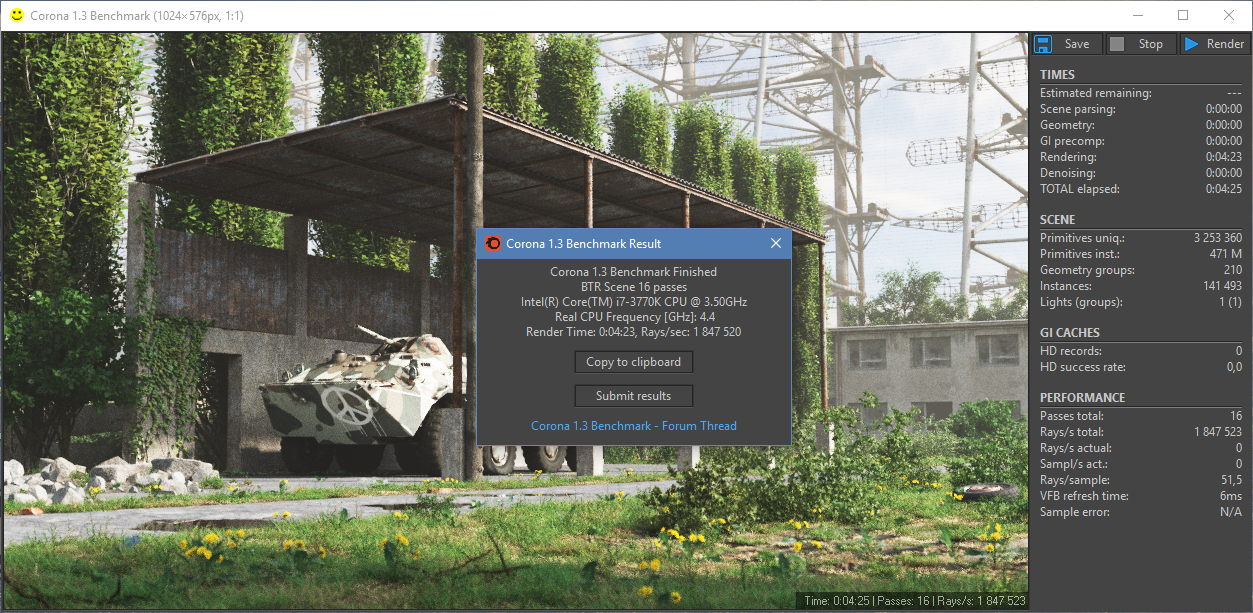
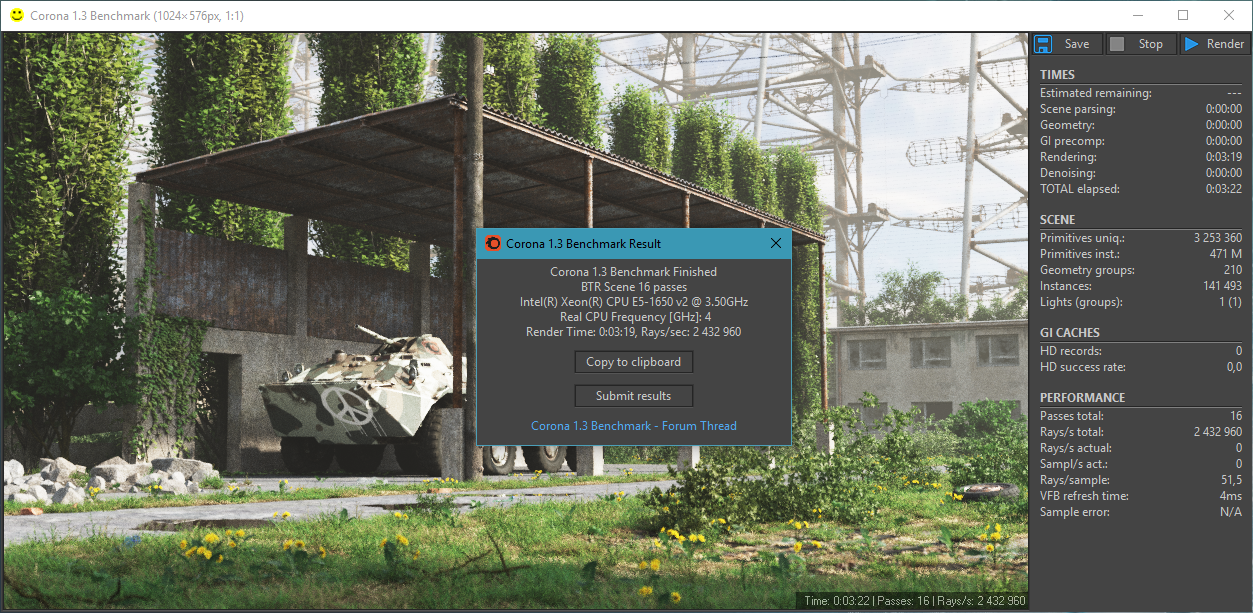




Synthetic gaming performance test
3D Mark Time Spy

Photo processing software
Testing method
I took a set of pictures from the paintball taken on the good old Nikon D60 in NEF format. Only 329 frames. Import time, preview building and other operations were not measured, as it is not entirely clear how to measure them with sufficient accuracy. The conversion time of this batch of files to JPEG was measured. The task processing time was estimated by the difference in time of the change in the first and last exported JPEG. Not the most accurate indicator, I agree, 3-5 seconds are not taken into account at the start of the export process, but an easily automated test and you do not need to constantly sit and monitor the process with a stopwatch, as you would when trying to estimate the import time, and all the systems in equal conditions. The processing did not exactly rest on the disk, the source code and the export folder were on the SSD.

Adobe Lightroom 5.7
The results were rather strange at first glance. It would seem that the process of developing RAW images should be well parallelized. And even if the development of a specific frame cannot be scattered across several cores, there were more than three hundred pictures in the processing queue! Know yourself scatter each frame to your core. But judging by the processor load, which ranged from 40% on i7 to 20% on E5-2680v2, the old Lightroom does not know how to do this. According to the CPU loading graph, it can be seen that it cannot be used more than 4 threads, hence the minimal increase. It is surprising that it exists at all - the speed per stream on a 10-core should be noticeably lower than the overclocked i7. In general, the 2013 sample application is sharpened for a maximum of two to four-threaded processors and is not able to benefit from modern (and not very) multi-threaded processors.
Adobe Lightroom Classic CC (7.5)
After the results of the tests Lightroom 5.7, which caused disappointment, I decided to check how things are on the current versions of software from Adobe.
Testing was carried out again with real settings. The hardware acceleration of UI rendering was activated (judging by monitoring, Lighroom Classic supports drawing using DX12) and using OpenCL for Adobe Camera RAW, because in the absence of compatibility problems, no one in their right mind would turn off these options, but I’m testing system performance in general in certain tasks.
Adobe Lightroom Classic CC performed much better than the 2013 version of Lightroom. Apart from the fact that on I7, the latest version showed much better speed, the extra pair of cores gave a reduction in the processing time of the pack by almost a minute (55 seconds, to be exact), that is, by about 26%. The addition of another 4 cores gave an acceleration of 51 seconds or 30%. Excellent in itself, and if you compare the results of the i7 and E5-2680v2, it is altogether impressive. Decimal core does the job exactly 2 times faster than quad core. Scaling is more than linear, given that the i7 operates at 4.44GHz, and E5-2680v2 in boost squeezes out of itself 3.2GHz under load on all cores.
The difference in the behavior of different versions of the same application clearly demonstrates that you cannot just take and speed up the software just by giving it a bunch of cores. Software must also be appropriate.
Yes, the new Lightroom Classic CC is good, but the trial will end soon, and there is no desire to post 900 rubles per month for a subscription, I would rather pay the full amount once, but Adobe does not offer this option. The last Lightroom that could be bought, not rented is its sixth version. But again, there is no reason to hope for an upgrade of this version, just as for noticeable discounts when upgrading from 5.7 to 6.x. Not interested.
I wonder what can replace it? Nikon Capture NX? Maybe, but he steadily fell at me processing 2-3 frames from the queue, so it was not possible to conduct tests. It seems that some of the latest updates of Windows 10 broke it, but in any case, even if there is a normal multithreading, it is pointless to expect OpenCL support to be delivered to it, and without it, we will doom to repeatedly play Lightroom Classic.
Raw Therapee? Not even funny. Despite the rich functionality, to use this miracle of Open Source, which the hand of the UX-designer obviously did not touch, had to force myself. Hang up when you click on a folder and do not respond for 15 seconds without any indication of the process? The processing time, at times exceeding even Lightroom 5.7 (it was not possible to measure, minutes for 5 Raw Therapee chewed on about a third of a pack, and I was tired of waiting)? This is the norm. Probably. For someone. May be. But I'd rather pay for an adequate interface and a normal speed. What do we have out of paid analogues working under Windows? Who else makes graphics software?
Corel AfterShot Pro 3
Corel with its Corel AfterShot Pro 3. Moreover, with applications for winning the form “Corel AfterShot Pro 3 is up to 4x faster than Adobe Lightroom”. Already interesting.
Of course, with Corel's quadrupled speed, it’s bent, of course, but on I7-3770K Corel AfetrShot Pro 3 plays back from Adobe Lightroom CC about 84 seconds from 211 or 40%. At E5-1650v2, any fourfold superiority over Lightroom also smells, moreover, the gap was reduced, but he played 36 seconds or 24% in 300+ images. But on 20 streams, an unpleasant surprise was waiting for me - the processing time of a pack increased one and a half times compared to 12 streams. WTF ?! And if you disable HT ? On 10 threads, it works quite normally, ends half a minute faster than on a six-core. And if you simply set a limit on the number of threads with your hands, and turn the HT on the processor back on? And about the same works. That is, AfterShot Pro on the number of threads more than 10 starts to level off wildly on level ground. Well, also the result. Another proof that in order for multi-core CPUs to show themselves, they need the appropriate software. And Corel AfetrShot Pro 3 was clearly sharpened by 4-8 threads.
Games
The choice is mainly due not to the representativeness of the sample, but to the fact that it was at hand from those games in which there are built-in benchmarks that allow to get less stable and repeatable results. But some kind of logic can be traced.
Testing method
The settings in all games are maximum with the exception of anti-aliasing settings. AA is disabled so as not to rest against the fillrate limit. The minimum averaged FPS was taken into account as the main indicator of the comfort of the game process on the tested hardware with the maximum settings. The indicator of “very rare events”, 0.1% min fps , is still more an indicator of random events, and if microfreezes do not go a continuous stream every few seconds, then it seems to me that the comfort of the game is not particularly affected. Naturally, I checked the frame-time schedule, and if the game did have problems with microfreezes, they were fixed. The results of measurements were taken from the built-in benchmark of the game, if the benchmark does not allow obtaining statistics explicitly, as in GTA V, the Riva Tuner Statics Server was used to fix performance parameters.

GTA V
Relatively middle-aged multiplatform game, on Windows uses the graphical API DX11. Since it came out on consoles, with support for multithreading, everything is pretty good, and the requirements for core performance are moderate, so the game supports consoles of the previous generation. Since the test cannot produce statistics, Riva Tuner Statistics Server was used to collect the test results. In order to complicate the task of the processor, the options for increasing the range of detail and shadow rendering were included.
screenshots of game settings for test
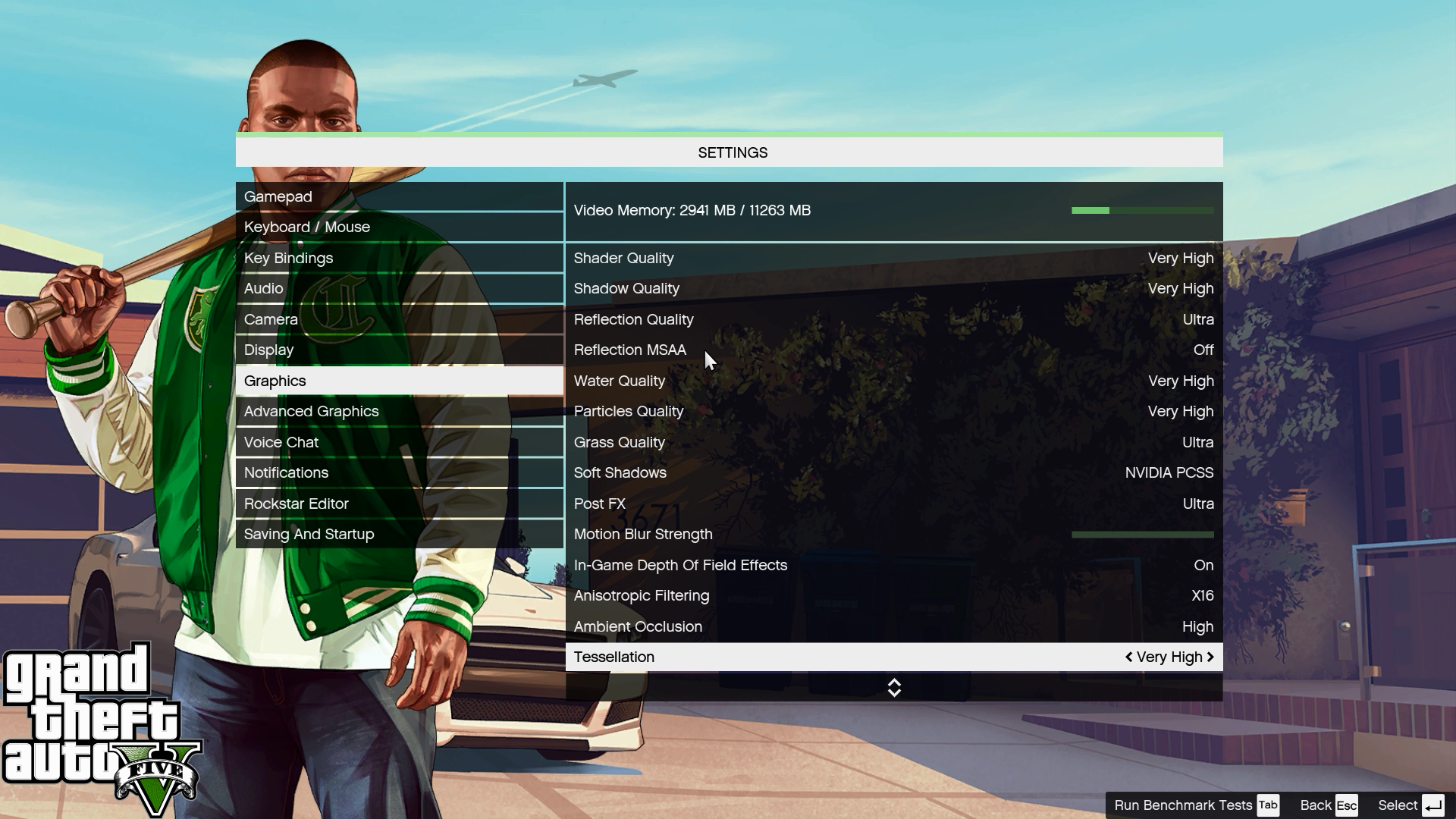
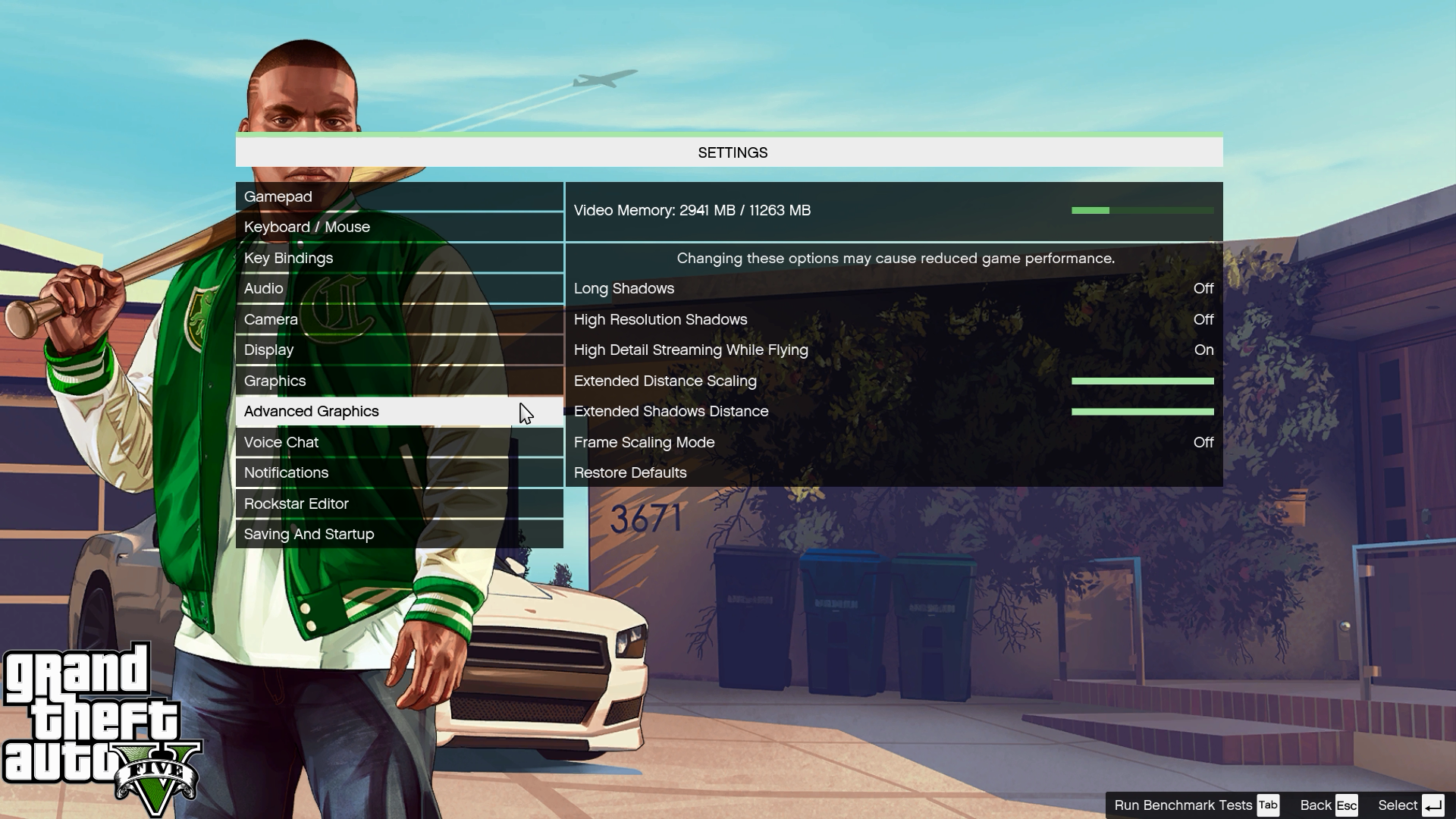



test results
I7-3770K
22-09-2018, 18:58:21 GTA5.exe benchmark completed, 8234 frames rendered in 115.485 s
Average framerate : 71.2 FPS
Minimum framerate : 45.3 FPS
Maximum framerate : 269.9 FPS
1% low framerate : 46.3 FPS
0.1% low framerate : 39.4 FPS
E5-1650V2
23-09-2018, 20:50:08 GTA5.exe benchmark completed, 7862 frames rendered in 116.125 s
Average framerate : 67.7 FPS
Minimum framerate : 48.1 FPS
Maximum framerate : 119.2 FPS
1% low framerate : 47.3 FPS
0.1% low framerate : 43.0 FPS
E5-2680v2
23-09-2018, 22:48:25 GTA5.exe benchmark completed, 7618 frames rendered in 116.313 s
Average framerate : 65.4 FPS
Minimum framerate : 47.7 FPS
Maximum framerate : 154.8 FPS
1% low framerate : 46.7 FPS
0.1% low framerate : 40.5 FPS
Far Cry 5
, PC DX11. PC . , - HyperThreading. E5-2680v2 CPU , 5-6 . CPU, , FPS . FPS . HD , . , VRAM 2.4 4.6 , 11- 1080Ti .



I7 3770K@4444
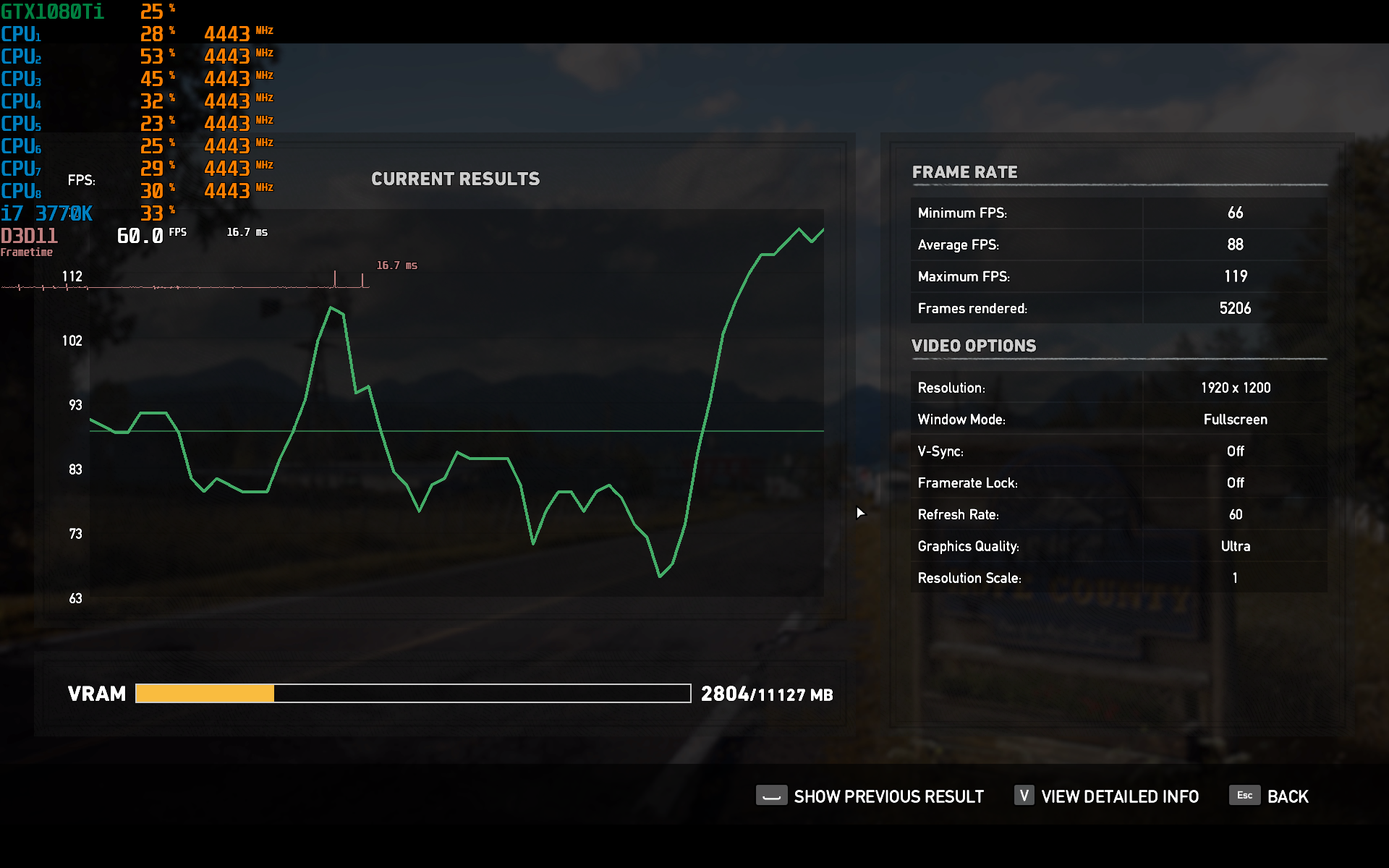
E5-1650v2@4000

E5-2680v2


E5-1650v2@4000

E5-2680v2

Deus Ex Mankind Divided
, DX12. , . DX12 . , FPS 15-20 , . , .


I7 3770K@4444
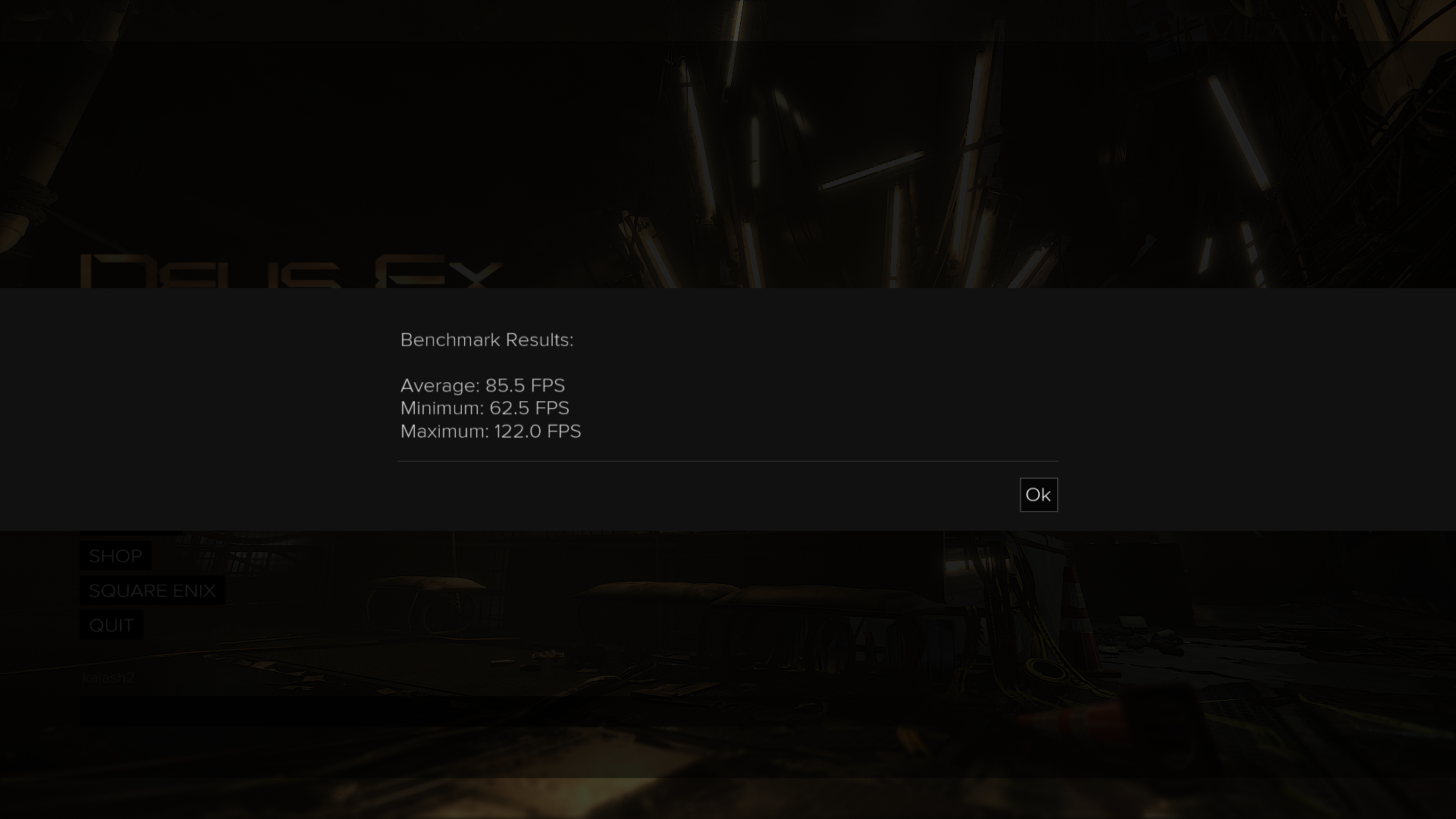
E5-1650v2@4000
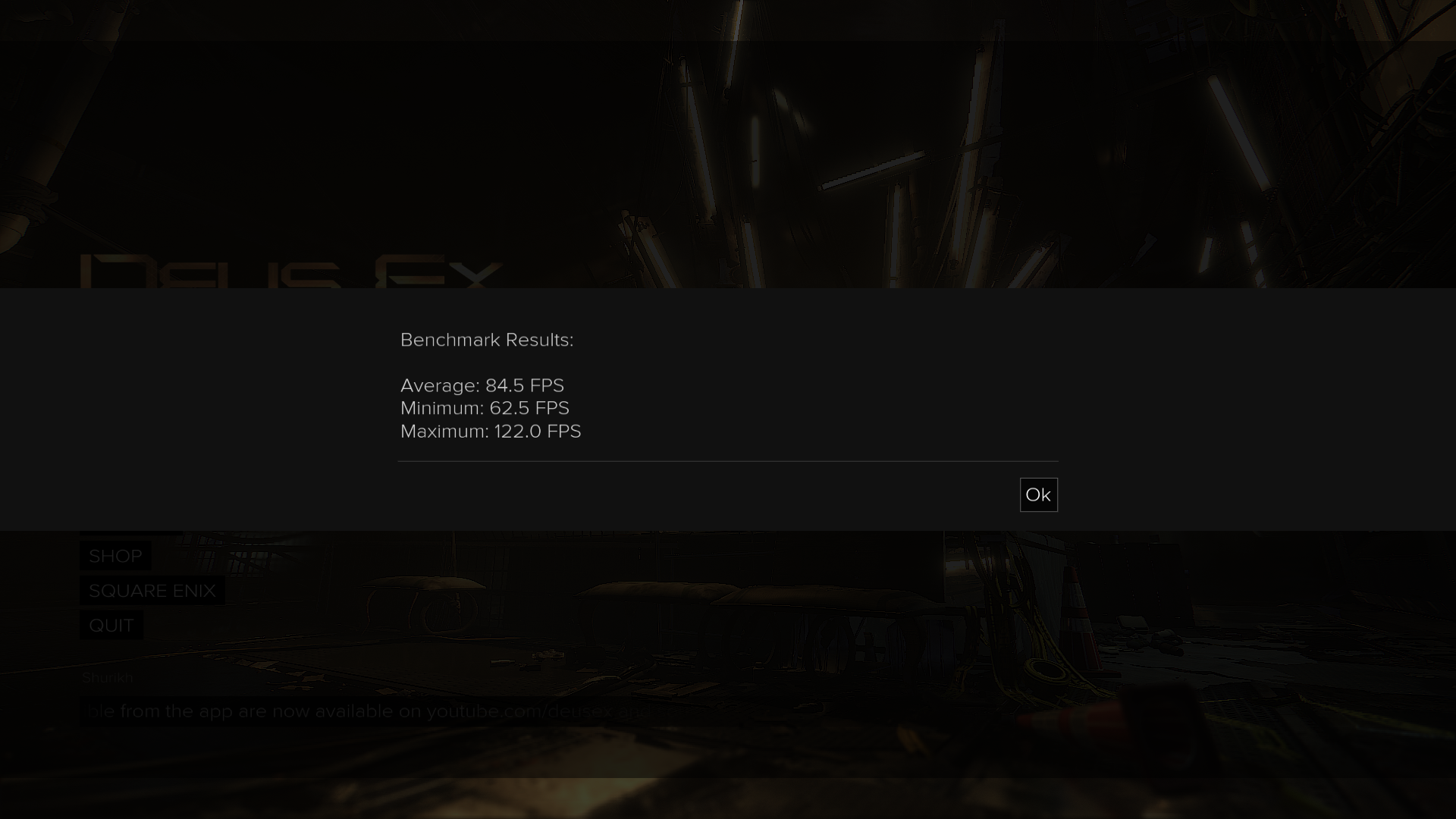
E5-2680v2


E5-1650v2@4000

E5-2680v2

, , , FPS .
id tech 6. Doom, Wolfenstein New Colossus
ID Software . ID Tech 6 API Vulcan CPU, . E5-2680v2 20 , . Doom 200 CPU.
Wolfenstein New Colossus — 20 , — 200 , : FPS 170 230 Xeon-. I7 – 150 270. FPS , , – FPS . . 150 FPS 170 .
Cities Skylines
. , E5-2680v2 . FPS 25, , . E5-1650v2@4100 , FPS 30, I7-3770K@4444 35-40 . I5-7600K 50-60 FPS .
: DosBox + Carmageddon + nGlide
, , . , Xeon-. , , , , , HT, , DosBox , boost 1.2 3.5 GHz, . , .
:
Carmageddon
, 70-80%, — GTX1080Ti, FPS .
FPS 30 , E5-2680v2 20. I7 E5-1650v2 – 25 , , FPS 5-7 . E5-1650v2 - . I5-7600K@4500 .
| . . | I7-3770K | E5-1650V2 | E5-2680V2 | |
|---|---|---|---|---|
| Lightroom 5.7 | sec | 393 | 372 | 347 |
| Lightroom 7.5 | sec | 221 | 156 | 105 |
| Corel AfterShot Pro3 | sec | 127 | 118 | 94 |
| Corona 1.3 | 1000 rays/sec | 1 848 | 2 433 | 3 339 |
| CineBench R15 | points | 817 | 1 062 | 1 386 |
| Memory Read | MB/s | 31 872 | 50 143 | 55 275 |
| Memory Write | MB/s | 33 072 | 36 202 | 47 102 |
| Memory Copy | MB/s | 29 932 | 48 249 | 50 877 |
| Memory Latency | ns | 46,90 | 75,20 | 75,30 |
| 3DMark Timespy. Overall score | points | 8 364 | 8 842 | 9 152 |
| 3DMark Timespy. Graphics Score | points | 9 756 | 9 588 | 9 469 |
| 3DMark Timespy. Graphis Test 1 | fps | 62,60 | 61,72 | 60,88 |
| 3DMark Timespy. Graphis Test 2 | fps | 56,72 | 55,58 | 54,96 |
| 3DMark Timespy. CPU Score | points | 4 626 | 6 137 | 7 697 |
| 3DMark Timespy. CPU Test | fps | 15,54 | 20,62 | 25,86 |
| Far Cry 5. Minimum FPS | fps | 66 | 65 | 60 |
| Far Cry 5. Average FPS | fps | 89 | 89 | 82 |
| Far Cry 5. Maximum FPS | fps | 120 | 124 | 115 |
| Deus Ex: Mankind Divided, minimum | fps | 62,50 | 62,50 | 53,10 |
| Deus Ex: Mankind Divided, average | fps | 85,50 | 84,50 | 73,20 |
| Deus Ex: Mankind Divided, maximum | fps | 122,00 | 122,00 | 105,30 |
| GTA V Average framerate | fps | 71,60 | 67,70 | 65,40 |
| GTA V min framerate | fps | 47,10 | 48,80 | 48,10 |
| GTA V 1% low framerate | fps | 46,30 | 47,30 | 46,70 |
| GTA V 0.1% low framerate | fps | 39,40 | 43,00 | 40,50 |
. , .
E5-2680v2 CPU CPU. , , - , . , . 50 , , .
E5-1650v2 . , . , .
I7-3770K. , . . , , I5-7600K. , I7 , ( — I3-8100).
, LGA2011v2 Xeon- E5-2667v2 E5-2687Wv2 c , Xeon E5-2680v2 , 4-8 , . , E5-2680v2 , , (, ).
PS: … , . E5-1650v2 OCCT . 3, . , – , .
Source: https://habr.com/ru/post/426317/
All Articles